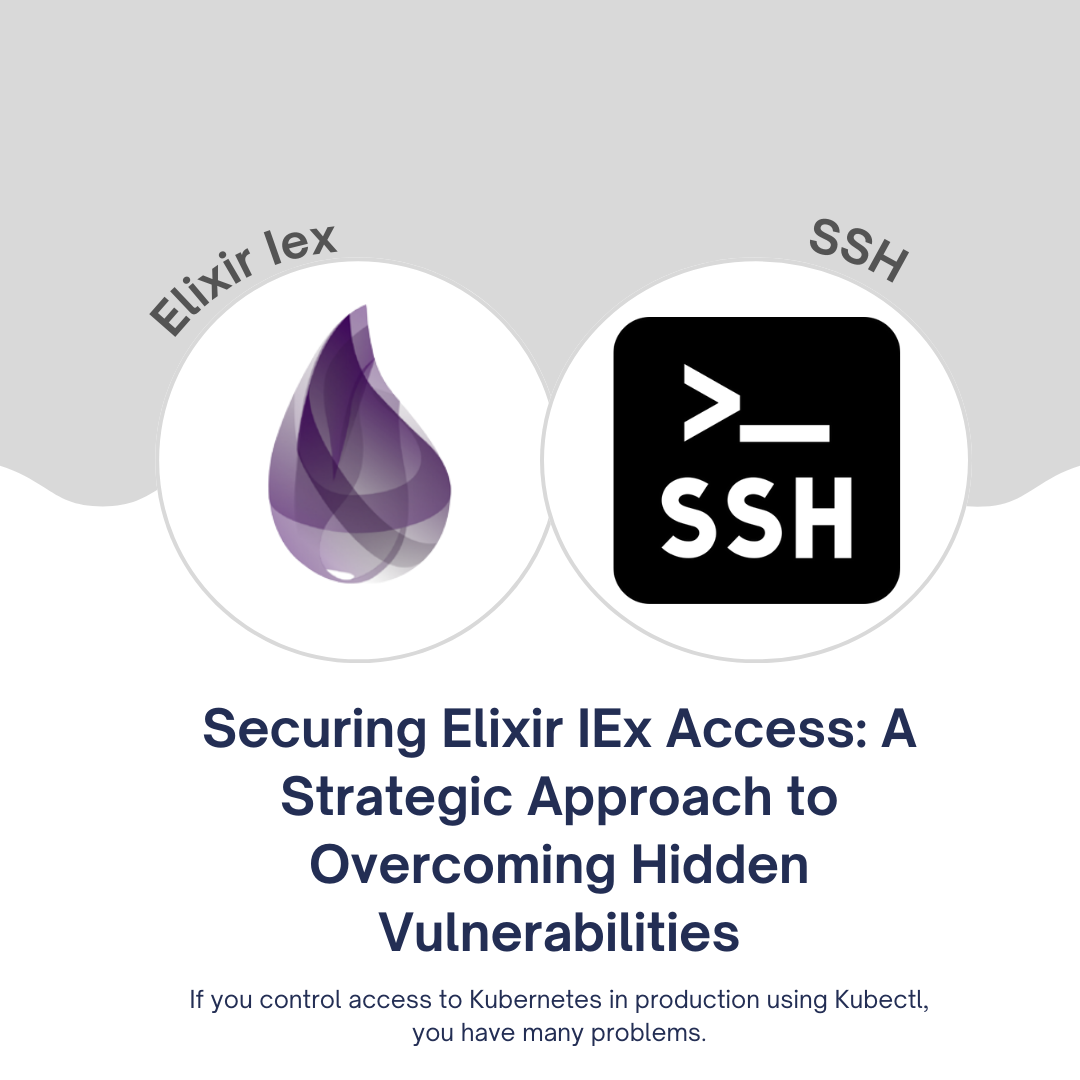Securing Elixir IEx Access: A Strategic Approach to Overcoming Hidden Vulnerabilities

In the world of Elixir, fast and efficient access to the Interactive Elixir Shell (IEx) is crucial for maintaining product speed and ensuring rapid troubleshooting, bug fixes, and incident resolutions. However, managing this access securely can be a complex and often overlooked challenge. In this article, we'll delve into the five biggest problems associated with controlling access to Elixir IEx via SSH, the impacts they create, and practical steps you can take to mitigate these issues.
The Five Biggest Problems
1. Fast Access vs. Security Risks
Problem: Many teams prioritize fast access over security, leading to inefficient workflows and significant security risks.
Impact: This approach can jeopardize the business's security and lead to potential data breaches.
2. Painful Infrastructure Building
Problem: Constructing the infrastructure for Elixir IEx access via SSH can be a cumbersome process.
Impact: This can result in delays and operational inefficiencies.
3. Hidden Vulnerabilities
Problem: Certain vital components are often missing from access management, creating hidden vulnerabilities.
Impact: These vulnerabilities can be exploited by malicious actors, posing a substantial security threat.
4. Compliance Concerns
Problem: Meeting compliance standards such as GDPR, PCI, SOC2, and HIPAA can be challenging.
Impact: Non-compliance can result in legal consequences and damage to the organization's reputation.
5. Developer Experience
Problem: Providing a smooth and efficient developer experience can be a struggle.
Impact: Poor developer experience can hamper productivity and lead to frustration among engineering teams.
Now that we've identified these problems, let's explore the steps you can take to address them.
1. Gradually Implement Necessary Features
Add Elixir IEx to Existing Systems
One way to address these issues is to follow the 80/20 rule: start by gradually implementing essential features without overwhelming your team. For instance:
- If you already use Google Workspaces, you don't need a separate LDAP directory.
- Integrating Single Sign-On (SSO) into SSH access can be challenging, but look for tools that simplify this process, such as Cloud Shell solutions from AWS/Google Cloud or Runops.
- Prioritize implementing SSO and Multi-Factor Authentication (MFA) through Google OAuth over a more extensive LDAP project to expedite access improvements.
Remember, it's better to have one tool that effectively solves 80% of the problem than multiple tools with limited capabilities.
2. Tailor Access Features to Your Industry
Consider the specific needs of your industry when implementing Elixir IEx access features:
- Developer Experience Focus: If your industry is less regulated and doesn't handle sensitive data, prioritize improving developer experience, SSO, and MFA. Aim to reduce the number of steps required for developers to access Elixir IEx.
- Compliance Emphasis: In highly regulated sectors like fintech, where PCI compliance is essential, focus on robust security and compliance measures, even if they require more steps. Remember that no audit trail could mean no business in some cases.
3. Leverage Comprehensive Solutions
To reduce complexity, streamline your access management by incorporating various systems and tools into a single solution:
- Instead of relying on a shiny but specialized tool, seek solutions that can manage Elixir IEx along with other access needs like AWS/GCP, databases, Kubernetes, and servers.
- For instance, tools like Runops may not offer the slickest user experience but provide a single platform to handle multiple access requirements efficiently.
Remember, delivering a slightly less polished user experience for everything through one tool is often superior to managing multiple tools for various use cases.
4. Add Friction to Unwanted Access Methods
Sometimes, the easiest access methods are not the most secure. To encourage best practices, consider introducing friction to these methods:
- For instance, if engineers commonly access production Elixir IEx via an insecure route, you could introduce a form submission step to incentivize the ideal method, making the quickest approach less attractive.
- Alternatively, if console access is a security concern, you could require teams to submit Jira requests, making it less convenient than automated Infrastructure as Code (IaC) pipelines. Over time, you can improve the IaC experience, making it the preferred method.
In conclusion, managing access to Elixir IEx via SSH presents various challenges, but by following these four steps, you can significantly reduce security risks, improve efficiency, and ensure compliance within your organization. Remember that a thoughtful approach tailored to your industry's needs is key to achieving a balance between security and productivity.
